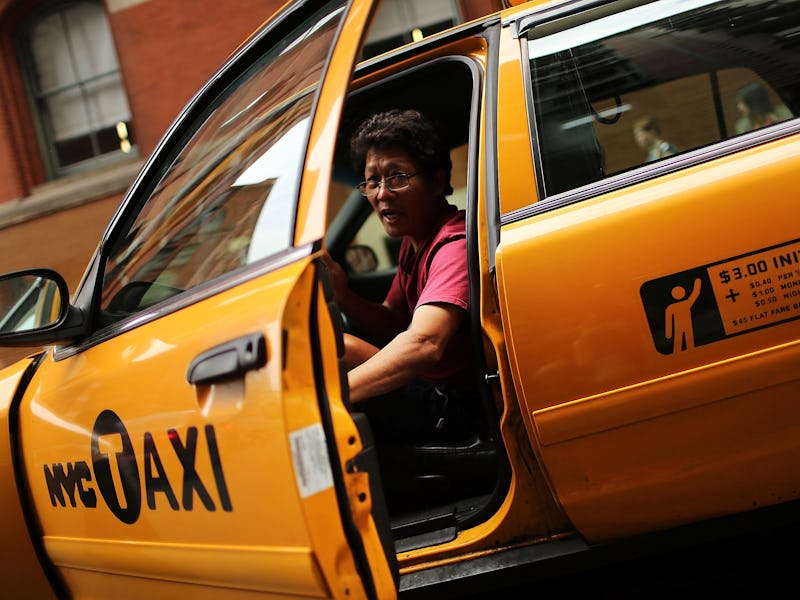Uber Could Replace Every Single NYC Taxi With Far Fewer Cars
A new study reveals Uber's efficiency savings.

Next time you take an Uber, think about the planet and use the carpool option. If everybody did it, Uber could replace every single taxi in New York City with just one-fourth of the vehicles. A team of researchers at MIT’s Computer Science and Artificial Intelligence Laboratory (CSAIL) has crunched the numbers and discovered that, owing to the efficiencies in ridesharing app algorithms, Uber and Lyft’s carpool system could serve a major city with a fraction of the cars.
It’s a big discovery, especially considering that self-driving cars have the potential to change this all over again. Tesla CEO Elon Musk has even proposed a future form of bus where users call the vehicle to their exact location through a smartphone app. Other initiatives like Volkswagen’s Moia are built with an end goal of autonomous vehicles servicing the city of the future. This MIT study shows the major savings on offer.
Tesla CEO Elon Musk envisions a future ridesharing system powered by autonomous vehicles.
“To our knowledge, this is the first time that scientists have been able to experimentally quantify the trade-off between fleet size, capacity, waiting time, travel delay, and operational costs for a range of vehicles, from taxis to vans and shuttles,” Professor Daniela Rus from the CSAIL, leader of the study, said in a statement published Monday. “What’s more, the system is particularly suited to autonomous cars, since it can continuously reroute vehicles based on real-time requests.”
There are 14,000 taxi medallions in New York City. The team found that 3,000 two-person cars could accommodate 94 percent of all ride requests. If Uber used 10-person cars for its carpooling fleet, that would cover 95 percent of demand. However, when four-person cars were used, efficiency reached 98 percent, leading to a 2.3 minute average wait time.
The system developed an algorithm that could reroute cars based on where requests are coming in from and which areas are likely to have requests in the near future. This latter change led to a 20 percent increase in efficiencies. The new algorithm also routed based on vehicle size - if a 10-person vehicle is best for the mission, for example, it will send that one instead.
“Ride-sharing services have enormous potential for positive societal impact with respect to congestion, pollution and energy consumption,” said Rus. “I think it’s important that we as researchers do everything we can to explore ways to make these transportation systems as efficient and reliable as possible.”
The findings will be published in Proceedings of the National Academy of the Sciences (PNAS).